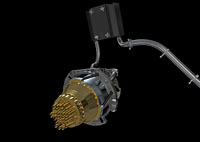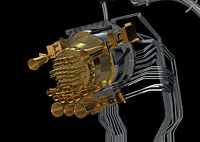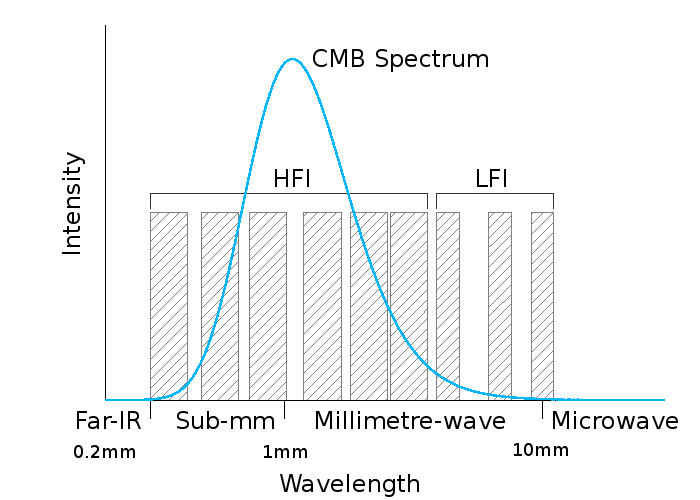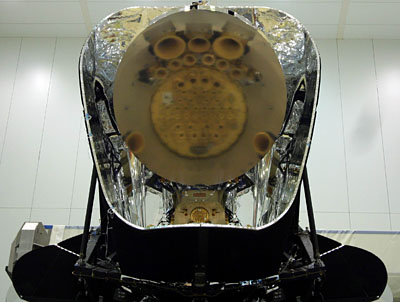Millimetre radiation is emitted, at some level, by all objects. This means that as well as detecting the CMB, the Planck instruments will also detect the emission from the satellite, and even the detectors themselves. To reduce this emission, the instruments are cooled to cryogenic temperatures, with HFI being at just 0.1 K (0.1o above absolute zero). Without this, trying to detect the CMB would be like trying to take a photo while shining a bright torch into the camera lens. Simply by being out in space and shielding itself from the Sun, Planck can cool down to around 50 K. One fridge will then cool LFI down to 20 K, with a further two fridges cooling various parts of HFI to either 4 K or 0.1 K. All the fridges use helium to achieve such low temperatures.
High Frequency Instrument

The High Frequency Instrument, or HFI for short, will measure radiation in six frequency bands: 100, 140, 220, 350, 550 and 850 GHz (corresponding, respectively, to wavelengths of 3, 2, 1.5, 0.9, 0.5 and 0.3 mm). There are 52 detectors in total, distributed over all six frequencies. The four lower-frequency channels are sensitive to two polarisations of light, allowing more information to be gleaned from the CMB and other astronomy targets. The HFI detectors are called “bolometers“, which are very sensitive thermometers. The incoming radiation heats up an absorbing material a tiny fraction, which results in a large change in resistance of an attached device. Since they are so sensitive to changes in temperature, the cryogenic cooling system has to be very stable.
Low Frequency Instrument

The Low Frequency Instrument, or LFI for short, will measure radiation in three frequency bands: 30, 45 and 70 GHz (corresponding, respectively, to wavelengths of 10, 7 and 4 mm). There are 22 detectors in total, distributed over all three frequencies. The LFI detectors are called High Electron Mobility Transistors (or HEMTs), which are similar to the transistors in radios, amplifying the signal and converting it to a voltage. The 22 LFI horns are arranged around the edge of the HFI instrument, as shown on the left.

The image above shows the CMB intensity, or brightness, over a range of wavelengths from the Far-Infrared (Far-IR) to the Microwave. The wavelength bands of the two instruments are shown as the hashed boxes.
Both instuments are cooled down to close to absolute zero by several cryogenic systems detailed here.
